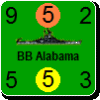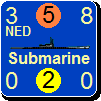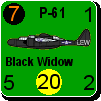Extraneous
Posts: 1810
Joined: 6/14/2008
Status: offline

|
Operation Barbarossa was launched on June 22, 1941.
Total Axis forces available for Barbarossa were therefore in the order of 3.9 million. On 22 June, the German Wehrmacht achieved a local superiority in its initial assault (98 German divisions), including 29 armoured and motorized divisions, some 90% of its mobile forces.
According to Mikhail Meltyukhov, by the start of war, the Red Army numbered altogether 5,774,211 troops: 4,605,321 in ground forces, 475,656 in air forces, 353,752 in the navy, 167,582 as border guards and 171,900 in internal troops of the NKVD (316.5 Divisions with 25,700 tanks and 18,700 aircraft).
The Red Army possessed 23,106 tanks, of which about 12,782 were in the five Western Military Districts (three of which directly faced the German invasion front). However, maintenance and readiness standards were very poor; ammunition and radios were in short supply, and many units lacked the trucks needed for resupply beyond their basic fuel and ammunition loads. The Red Army had also partly dispersed their tanks to infantry divisions for infantry support.
The German Wehrmacht had about 5,200 tanks overall, of which 3,350 were committed to the invasion. This yields a balance of immediately available tanks of about 4:1 in the Red Army's favor. The best Soviet tank, the T-34, was the most modern in the world, and the KV series the best armored. The most advanced Soviet tank models, however, the T-34 and KV-1, were not available in large numbers early in the war, and only accounted for 7.2% of the total Soviet tank force. But while these 1,861 modern tanks were technically superior to the 1,404 German medium Panzer III and IV tanks, the Soviets in 1941 still lacked the communications, training and experience to employ such weapons effectively.
The Red Army was dispersed and unprepared, and units were often separated and without transportation to concentrate prior to combat. Although the Red Army had numerous, well-designed artillery pieces, some of the guns had no ammunition. Artillery units often lacked transportation to move their guns. Tank units were rarely well-equipped, and also lacked training and logistical support. Maintenance standards were very poor. Units were sent into combat with no arrangements for refueling, ammunition resupply, or personnel replacement. Often, after a single engagement, units were destroyed or rendered ineffective. The army was in the midst of reorganizing the armor units into large tank corps, adding to the disorganization.
The number of aircraft was also heavily in the Soviets' favor. However, Soviet aircraft were largely obsolete, and Soviet artillery lacked modern fire control techniques. Most Soviet units were on a peacetime footing, explaining why aviation units had their aircraft parked in closely-bunched neat rows, rather than dispersed, making easy targets for the Luftwaffe in the first days of the conflict. Prior to the invasion the VVS (Voenno-Vozdushnye Sily, Soviet Air Force) was forbidden to shoot down Luftwaffe reconnaissance aircraft, despite hundreds of prewar incursions into Soviet airspace.
As a result, although on paper the Red Army in 1941 seemed at least the equal of the German army, the reality in the field was far different; incompetent officers, as well as partial lack of equipment, insufficient motorized logistical support, and poor training placed the Red Army at a severe disadvantage.
Opposing forces for Operation Barbarossa
Axis forces: 166 Divisions, 4,306,800 Personnel, 42,601 Guns and mortars, 4,171 Tanks (including assault guns), 4,389 Aircraft.
Soviet forces: 190 Divisions, 3,289,851 Personnel, 59,787 Guns and mortars, 15,687 Tanks (including assault guns), 11, 537 Aircraft.
Divisions 1.1 to 1 Soviet advantage
Personnel 1.3 to 1 Axis advantage
Guns and mortars 1.4 to 1 Soviet advantage
Tanks (including assault guns) 1.38 to 1 Soviet advantage
Aircraft Soviet 2.6 to 1 Soviet advantage
Operation Barbarossa was postponemed from its original date of May 15, 1941 due to the intervention against an anti-German coup in Yugoslavia and Greek advances against Italy's occupation of Albania. Couplle that with the late Russia spring of 1941, compounded by particularly rainy weather in June 1941 made a number of roads in western parts of the Soviet Union impassable to heavy vehicles. During the campaign, Hitler ordered the main thrust toward Moscow to be diverted southward to help the southern army group capture Ukraine. This move delayed the assault on the Soviet capital, though it also helped secure Army Group Center's southern flank. By the time they turned to Moscow, the Red Army's fierce resistance, the mud following the autumn rains and, eventually, snow, brought the advance to a halt.
The USA is not in the war and Britain is fighting in North Africa jusr whom would you ask for the troops?
Now couple that with the successful winter offensive using the Siberian units and Stalin’s distrust of USA and Britain due to the “Polar Bear War”.
No, Stalin would not have allowed USA or British units in USSR.
_____________________________
University of Science Music and Culture (USMC) class of 71 and 72 ~ Extraneous (AKA Mziln)
|
 Printable Version
Printable Version














 .
. 

 New Messages
New Messages No New Messages
No New Messages Hot Topic w/ New Messages
Hot Topic w/ New Messages Hot Topic w/o New Messages
Hot Topic w/o New Messages Locked w/ New Messages
Locked w/ New Messages Locked w/o New Messages
Locked w/o New Messages Post New Thread
Post New Thread